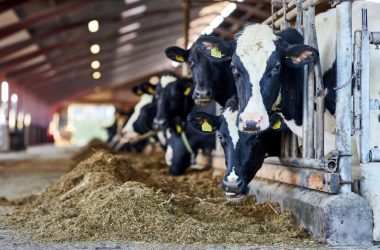Astronauts Robert L. Curbeam Jr. (left) and Christer Fuglesang on the Worldwide House Station
NASA
Extra mild could possibly be shed on how house flight impacts astronauts’ well being after the creation of the primary “space-omics” biobank – a group of hundreds of blood and tissue samples, plus medical data, taken over a number of house missions.
These embrace missions to the Worldwide House Station, in addition to the primary all-civilian house flight, SpaceX’s Inspiration4, which took 4 non-government-trained astronauts into house for 3 days in 2021.
Referred to as the House Omics and Medical Atlas (SOMA), the useful resource accommodates detailed medical knowledge, corresponding to on DNA harm and adjustments in individuals’s gene exercise and immune system functioning, collectively often known as biomarkers.
House flight is understood to pose sure well being dangers. As an example, astronauts lose bone density and muscle mass as a result of lack of gravity, and better ranges of radiation in house appear to trigger cell and DNA harm, which have a spread of impacts on the physique. These results could also be why astronauts are more prone to developing heart disease in later life and some have experienced worsening vision after being in house.
Amassing astronauts’ medical knowledge in a constant approach by way of the SOMA biobank will assist researchers perceive extra about these adjustments and probably develop methods to mitigate them, says Christopher Mason at Weill Cornell Medication in New York, who helped put the biobank collectively.
“Biomarkers don’t at all times translate into something that’s clinically significant, however it’s a pleasant method to begin to perceive how this distinctive surroundings is impacting us,” says Damian Bailey on the College of South Wales within the UK, who wasn’t concerned within the work.
One perception from the Inspiration4 mission is that, regardless of the astronauts experiencing a number of biomarker adjustments, most measurements returned to regular inside a couple of months of them coming again to Earth.
This implies that sending civilians into house doesn’t pose extra well being dangers than sending skilled astronauts, says Mason. “As an alternative of individuals coaching for many years to go, we might begin to actually open up house in direction of an increasing number of individuals.”
The outcomes from Inspiration4, which was crewed by two males and two ladies, additionally counsel that the adjustments in gene exercise returned to regular quicker within the ladies. That could be as a result of ladies’s our bodies have to have the ability to address a possible being pregnant, says Mason. “Having the ability to tolerate massive adjustments in physiology and fluid dynamics could also be nice for with the ability to handle being pregnant, but additionally handle the stress of spaceflight.”
Timothy Etheridge on the College of Exeter within the UK says it will likely be useful for researchers around the globe to have a standard useful resource they’ll use. “It’s good to have a constant method to amassing samples,” he says.
Thomas Smith at King’s School London says understanding the well being impacts of house flight will change into extra necessary if longer missions occur, corresponding to journeys to Mars. “Something that results in prolonged length missions, it’s extra necessary to know what’s occurring and, ideally, deal with it,” he says.
Subjects:












